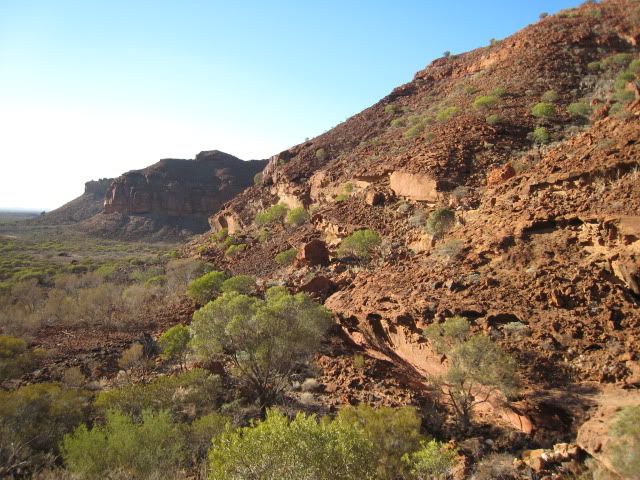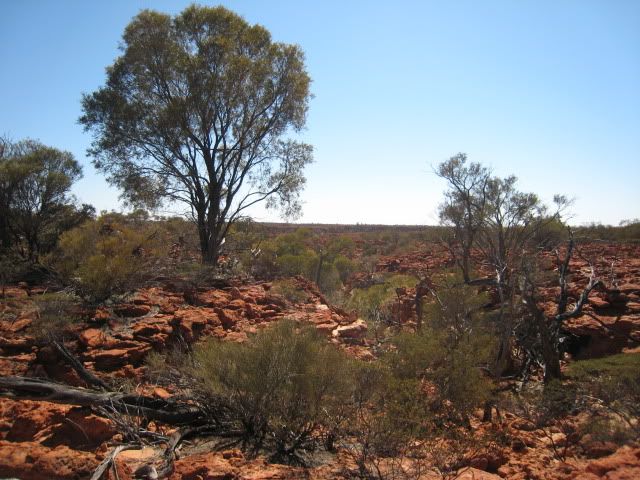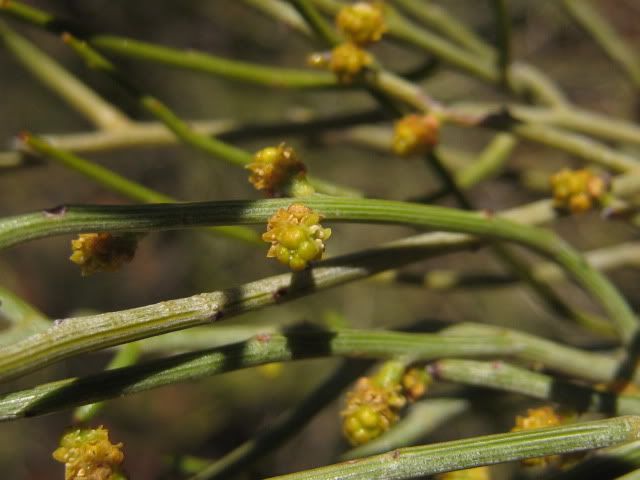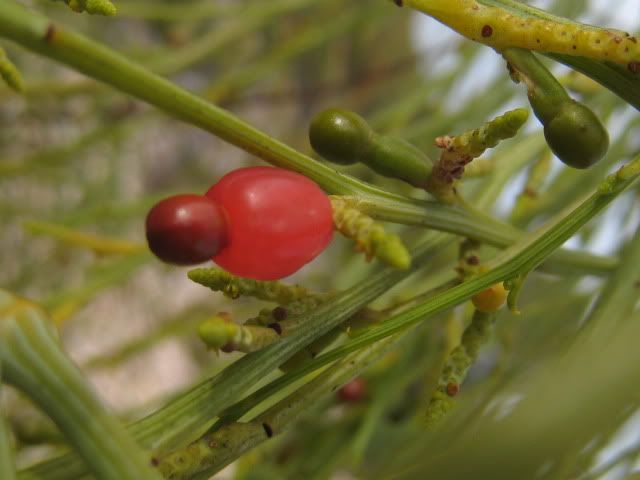What?
What the .. what is Omphacomeria? I struggled with the name at first... but it goes something like" OM-FAK OH-MERIA". Like a meditative chant. It is a medium - largish shrub (1.2 - 2 m) in the sandalwood family and only has just been discovered in Western Australia growing on a remote, arid-zone range in the Gascoyne district. It is growing on a mountainous, steep, sandstone range which is popular with the tourists, and is found in steep, rocky gullies - it is growing even around the main tourist campsite.
And has been very much overlooked and required the careful eye of a taxonomist over in Canberra to confirm its identity to genus - but as yet is unidentified to species level. So, this day and this age, we're still finding new genera for the state in our remote central regions.
I don't know why it was not found beforehand - its a large shrub for starters! There have been a few floristic surveys in the region beforehand - including the CALM Carnarvon Basin survey [1], which covered the more mesic western faces of the range as part of a regional survey. And there had been mistletoe-host plant surveys and other surveys or individual collectors who tinkered at the edges of floristic knowledge for the ranges. So, in 2009, this plant turns up all of a sudden! Since we were on holiday, we popped in to have a look. This was a big ask for our tiny little Subaru imprezza - because the roads are coarsely graded and really not appropriate for small cars with no clearance (but it has AWD - yeah). But we prevailed.
It looks very much like Exocarpos aphylla and superficially like Anthobolus leptomerioides - and you'd be forgiven to jump to that conclusion, except that both species are absent from the wider region around the ranges. The lack of historical or herbarium records of an 'Exocarpos" for the range was even more puzzling - this wasn't a case of misidentification - it was a case of had not been collected before. Full stop. The photo below shows this species as locally abundant (a sparse but dominant component of shrub stratum) on the eroding slopes of the range. There - in the foreground..
It is very much a root parasite, with no leaves (just them scales), striate, photosynthetic stems and minute spikes of tiny, sessile flowers. The main clincher is the Omphacomeria is dioecious, so flowers are unisexual and there are male and female flowers on separate plants (these are male flowers - we only found dried, old fruits on female plants and I forgot to take a photo of these).
The second clincher is that the fruit has the seed INSIDE the fleshy receptacle (it is like comparing Prumnopitys versus Podocarpos, if you are so inclined). Here is broom ballart (Exocarpos sparteus) for comparison.
The third clincher for Omphacomeria is that the branches and flowers are highly resinous.
So there you have it. To date, all species of Omphacomeria occur in the eastern states of Australia, and now we have it here - in a remote, isolated mountainous range in the Gascoyne. A place well visited but not surveyed well. I think the lesson to be learnt with this new discovery is that everything deserves a second look, since it may have been overlooked at first glance. And also there is still a lot more to discover in our relatively unknown central arid-zone ranges in Australia.
[1]: Gibson N, Keighery GJ, Lyons MN (2000). The flora and vegetation of seasonal and perennial wetlands of the southern Carnarvon Basin, Western Australia. Records of the Western Australian Museum Supplement 61, pp. 175–199





No comments:
Post a Comment